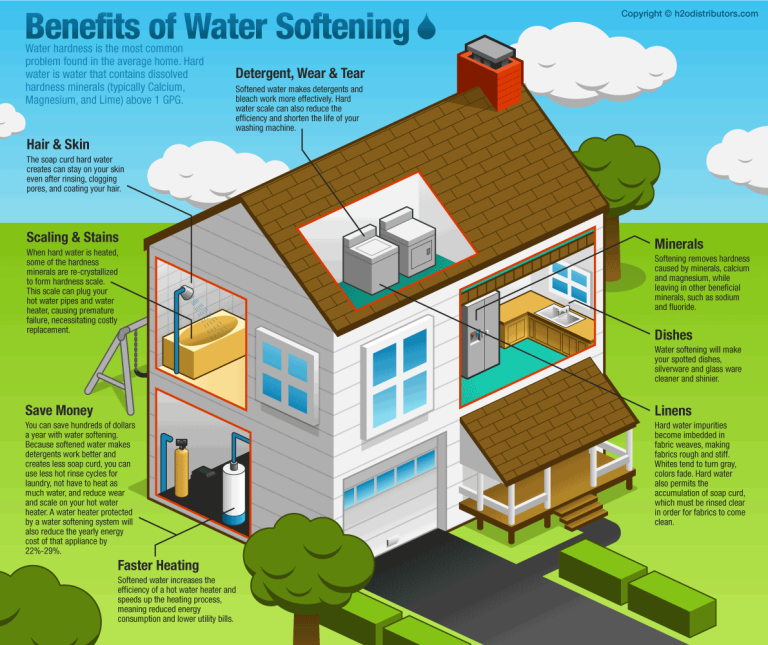Using Google Maps for Trip Planning: How to Do It in 2025
Here’s the thing about travel planning in 2025, doing it the old way just doesn’t make sense anymore. You know what I’m talking about: browser tabs multiplying like rabbits, guidebooks gathering dust, apps that don’t talk to each other.
Exhausting, right? There’s actually a smarter path forward. Google Maps trip planning has matured into something genuinely impressive, a single platform that consolidates what used to require a dozen different tools.
Throughout this guide, you’ll discover how to leverage cutting-edge features, construct detailed itineraries that actually work, and solve those annoying hiccups that derail plans. Plus, we’ll tackle something travelers often forget: maintaining connectivity when you’re exploring foreign territories.
Google Maps Trip Planning Features You Must Know in 2025
So you’re ready to ditch the chaos and embrace streamlined planning. Great. Let’s dig into the specific 2025 capabilities that’ll fundamentally change how you approach your next adventure.
AI-Powered Itinerary Suggestions
Gemini AI integration represents a genuine breakthrough for travel planning tools. This goes way beyond “here’s a taco place three blocks away.” You’re getting intelligent, personalized route suggestions that reflect actual logic. The platform evaluates your travel window, cross-references weather patterns, and identifies local happenings that coincide with your visit.
The really smart part? It clusters attractions geographically. No more criss-crossing the entire city six times in one day. Your suggestions keep you within logical neighborhoods, maximizing time and minimizing headaches. Here’s context worth noting: Google Trips, the earlier iteration, already handled day plans across the top 200 cities worldwide (Mozaik). The 2025 version demolishes those boundaries entirely.
Real-Time Collaboration Features
Shared lists transform group travel from nightmare to manageable. Everyone contributes ideas, votes on dining spots, and sees what’s gaining traction. Live location sharing eliminates those endless “where are you exactly?” text chains during the actual trip.
International travel adds complexity, particularly in destinations like China. Having dependable connectivity becomes non-negotiable for these collaborative tools. That’s where an esim for china proves invaluable; it guarantees uninterrupted access to Google Maps functionality throughout your journey abroad. Staying connected means adapting plans in real-time and keeping your entire crew synchronized from start to finish.
Enhanced Multi-Stop Route Optimization
Building routes with 10+ waypoints isn’t merely feasible, it’s genuinely straightforward now. Drag-and-drop functionality lets you shuffle locations until your daily flow feels natural. Time-based routing steers you clear of rush hours and tourist stampedes, which honestly preserves your mental health at crowded landmarks.
Planning that epic cross-country road trip? Suddenly manageable when every stop appears in visual sequence. The system generates realistic transit durations between points. You won’t accidentally schedule yourself for eight hours behind the wheel in a single afternoon.
Immersive View for Pre-Trip Visualization
Virtual exploration before departure fundamentally changes your preparation game. The time-lapse capability displays locations across different hours, helping you determine optimal visiting windows for specific venues. Indoor navigation previews for airports and transit stations dramatically reduce anxiety when you’re sprinting toward tight connections.
Step-by-Step Guide to Creating Your Perfect Map-Based Itinerary
These powerful capabilities sit waiting for you to deploy them. Here’s precisely how to construct a comprehensive, personalized itinerary from absolute scratch.
Setting Up Your Custom Travel Map
My Maps versus standard Google Maps? Yeah, that confuses everyone initially. My Maps delivers superior customization capabilities, while standard Maps excels for rapid planning. Your choice hinges on trip complexity, weekend escapes rarely demand elaborate custom mapping.
Naming conventions carry more weight than you’d expect. Deploy formats like “Japan 2025 – Week 1” rather than vague labels. Implement custom icons and color coding by category, blue designating hotels, red marking restaurants, green highlighting parks.
Researching and Adding Destinations
The Explore function surfaces hidden gems you’d otherwise miss completely. User reviews and image galleries accelerate informed decision-making. Here’s a pro move: don’t create just one list. Build separate collections for absolute must-sees, contingency options, and dining choices.
This map-based itinerary planning methodology maintains everything visual and systematized. Geographical clusters emerge naturally, practically begging you to group activities by proximity.
Organizing Destinations by Day and Theme
Establishing layers for individual trip days converts confusion into lucid organization. Measure distances between attractions to grasp what’s genuinely achievable. That museum fifteen miles from downtown? Perhaps relocate it to a different day.
Estimating realistic daily itineraries prevents complete burnout. Account for meals, rest intervals, and those inevitable unexpected delays. Your exhausted future self will deeply appreciate that buffer time you built in.
Advanced Google Maps Trip Planning Strategies for 2025
You’ve conquered the fundamentals of creating your map-based itinerary. Ready to level up? These advanced integration tactics will amplify your planning efficiency and unlock capabilities most travelers never discover.
Integrating with Other Tools
Calendar syncing produces automated scheduling that feels like magic. Your saved locations materialize as calendar entries with addresses pre-populated. Connecting Google Flights and Hotels simplifies booking since your entire ecosystem lives together.
Exporting to Google Sheets facilitates budget tracking without application juggling. Third-party integrations, like TripIt and Wanderlog, extend functionality considerably further. Implementing optimized planning frameworks generates measurable outcomes. Research documents a statistically significant 16.7% increase in the weaving rate for treatment looms when scheduling improved (INFORMS). Translation? Better planning structures genuinely boost efficiency across domains.
Offline Maps for International Adventures
Downloading complete regions pre-departure rescues you from connectivity disasters. Storage constraints exist, so prioritize critical areas over comprehensive coverage. Delete and refresh data before major expeditions for current information.
Android users can leverage SD card expansion, something iOS categorically doesn’t permit. Understanding these platform distinctions shapes appropriate preparation.
Using Street View for Pre-Trip Reconnaissance
Virtually scouting hotel locations exposes what promotional photos deliberately conceal. You’ll identify parking availability, entrance locations, and neighborhood character before stepping off the plane. Understanding local street configurations builds navigational confidence for that crucial first day in unfamiliar territory.
Google Maps Travel Planning Tools for Different Trip Types
Advanced techniques function universally, sure. But different travel styles demand tailored strategies. Let’s explore optimizing Google Maps for your specific journey type.
Road Trip Planning
Constructing multi-city routes with scenic diversions transforms marathon drives into enjoyable experiences. Locating EV charging stations and rest facilities becomes mission-critical for electric vehicle owners. Alternative route planning preserves schedule flexibility when spontaneous detours call your name.
Business Travel Optimization
Meeting location planning with adequate buffer time prevents those awkward tardy arrivals. Familiarize yourself with airport-to-hotel routes beforehand, travel day stress reduction matters. Identify backup routes for time-sensitive appointments because traffic invariably happens. Research indicates a significant percentage of job seekers say well-written job descriptions substantially influence their application decision (Hiver). That parallels how detailed planning in using Google Maps shapes travel decisions and ultimate outcomes.
International Travel Preparation
Multi-country trip mapping reveals border crossing logistics easily overlooked during initial planning. Adjust currency and language parameters so information displays appropriately. Research local transportation infrastructure and booking procedures well before arrival.
Mobile vs Desktop: Maximizing Each Platform
Understanding trip-specific strategies matters enormously, but knowing which device to deploy for each planning phase can dramatically improve both efficiency and results.
Desktop Planning Advantages
Larger displays provide comprehensive overviews phones simply cannot match. Multiple browser tabs enable simultaneous research and comparison. Advanced My Maps capabilities perform better on desktop. Typing detailed annotations with a full keyboard? Infinitely easier.
Mobile App Exclusive Features
AR Live View navigation genuinely feels like science fiction but delivers practical results. Real-time traffic notifications enable instant route adjustments. Quick photo uploads and reviews capture moments while memory stays fresh. Location-triggered reminders activate when you approach specific places.
Seamless Synchronization
Saved places ought to materialize across all devices automatically. If they don’t? Check sync settings within account preferences. The “Send to phone” function pushes directions from desktop to mobile instantaneously, a lifesaver when you’re about to depart.
Pro Tips That Others Don’t Tell You
Beyond platform selection, these insider techniques help extract hidden value from Google Maps features most travelers completely overlook.
Using Data Layers
Transit layers illuminate public transportation routes with clarity. Bicycling layers expose bike lanes and trails for active exploration. Terrain layers prove essential for hiking and outdoor pursuits. Traffic layers determine optimal departure timing, leaving thirty minutes earlier might salvage an hour otherwise spent in gridlock.
Leveraging Popular Times Data
Dodging crowds at major attractions elevates your experience exponentially. Discovering optimal dining windows means abbreviated waits and superior service. Understand seasonal fluctuations, that beach presents drastically different experiences in July versus November. Plan around local peak periods instead of battling them.
Creating Alternative Backup Plans
Weather-contingent alternatives rescue trips from outright cancellation. Maintain both indoor and outdoor options ready for seamless swapping. Organize restaurant backup lists by neighborhood. Mark emergency locations, hospitals, embassies, pharmacies, on your map before crisis strikes.
Final Thoughts on Trip Planning
Google Maps trip planning has matured into something dramatically more powerful than basic navigation. The 2025 capabilities introduce AI-powered recommendations, collaborative frameworks, and immersive previews that fundamentally transform how we explore new places.
Begin with straightforward itineraries to develop confidence, then experiment with sophisticated integrations. Download offline maps, share plans with companions, and always maintain contingency options. Remember this: perfect planning doesn’t guarantee perfect trips. Flexibility carries equal importance to preparation. The most memorable adventures frequently materialize when you’re willing to deviate from even the most meticulously crafted itinerary.
Common Questions About Planning Trips with Google Maps
Can you plan a multi-day trip directly in Google Maps?
Absolutely. Through My Maps you can construct comprehensive multi-day itineraries with dedicated layers for each day. Standard Google Maps handles simpler trips but lacks sophisticated organization features serious planners require.
How many destinations can you add to a single route?
Google Maps permits up to 10 stops per route. For extended itineraries, construct multiple routes or utilize My Maps, which sidesteps that limitation. Third-party applications provide solutions if you need additional stops.
Does Google Maps work without the internet?
Offline maps deliver navigation and fundamental location data minus connectivity. Download regions before traveling. Certain features, traffic updates, business hours, require internet access for proper function.
Can multiple people edit the same itinerary simultaneously?
Yes. Shared lists and My Maps support real-time collaboration. Grant editing permissions to travel companions through sharing settings. Everyone observes updates instantaneously, making group planning substantially smoother.
How far in advance should I start planning?
Complex international journeys benefit from 2-3 months planning time. Weekend getaways need perhaps one week. Commence early enough to secure reservations but not so prematurely that details shift. 2025 travel tips recommend beginning research earlier for high-demand destinations.





